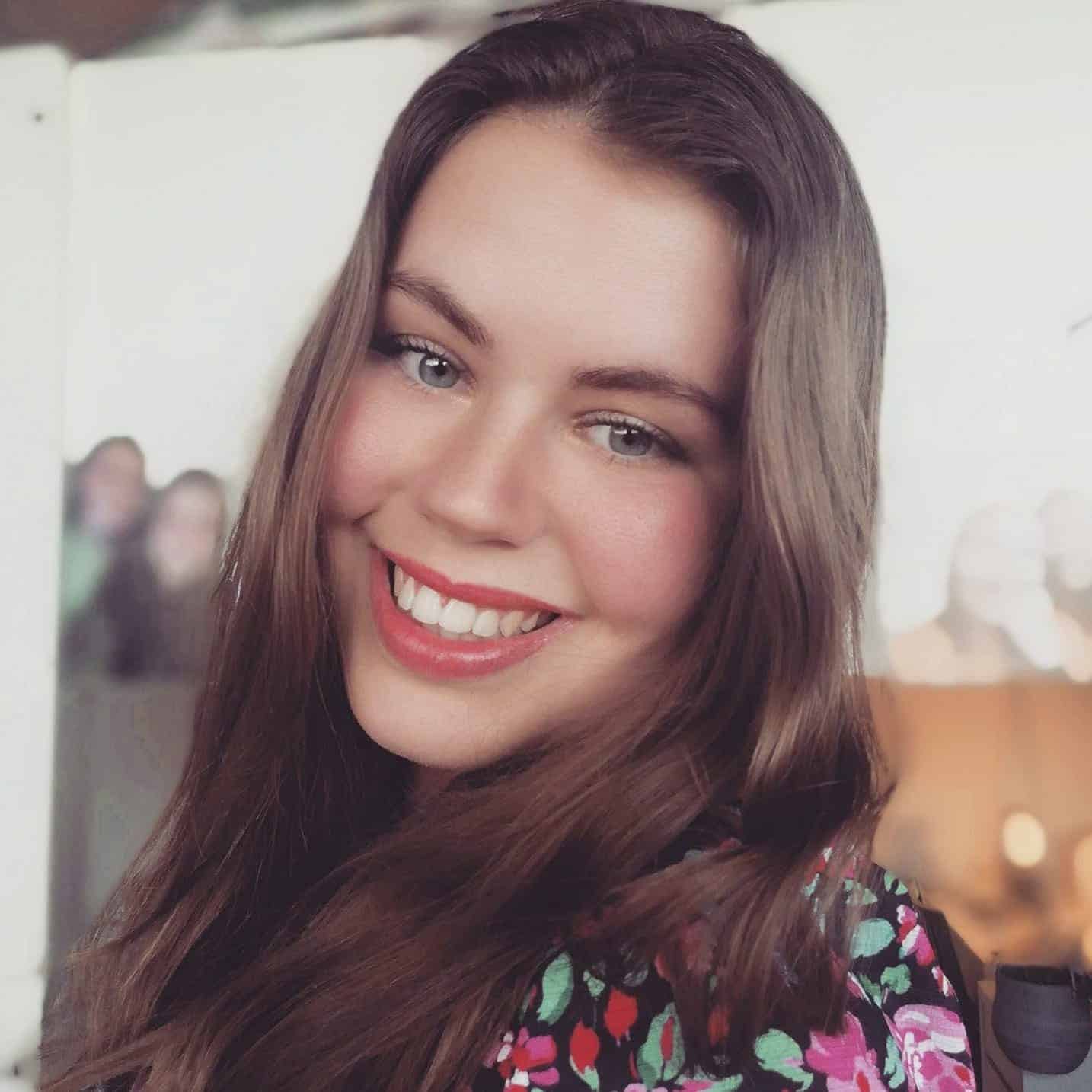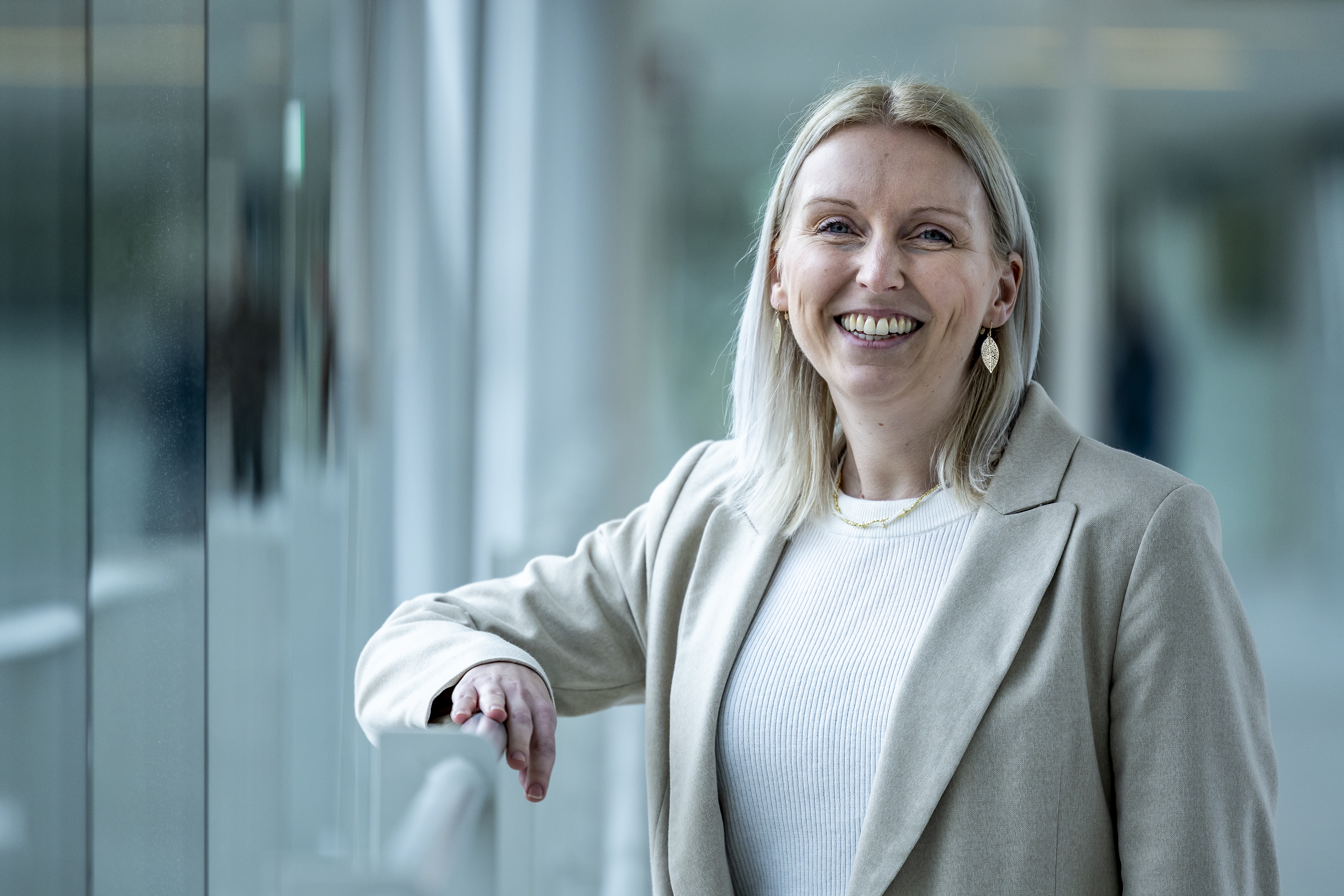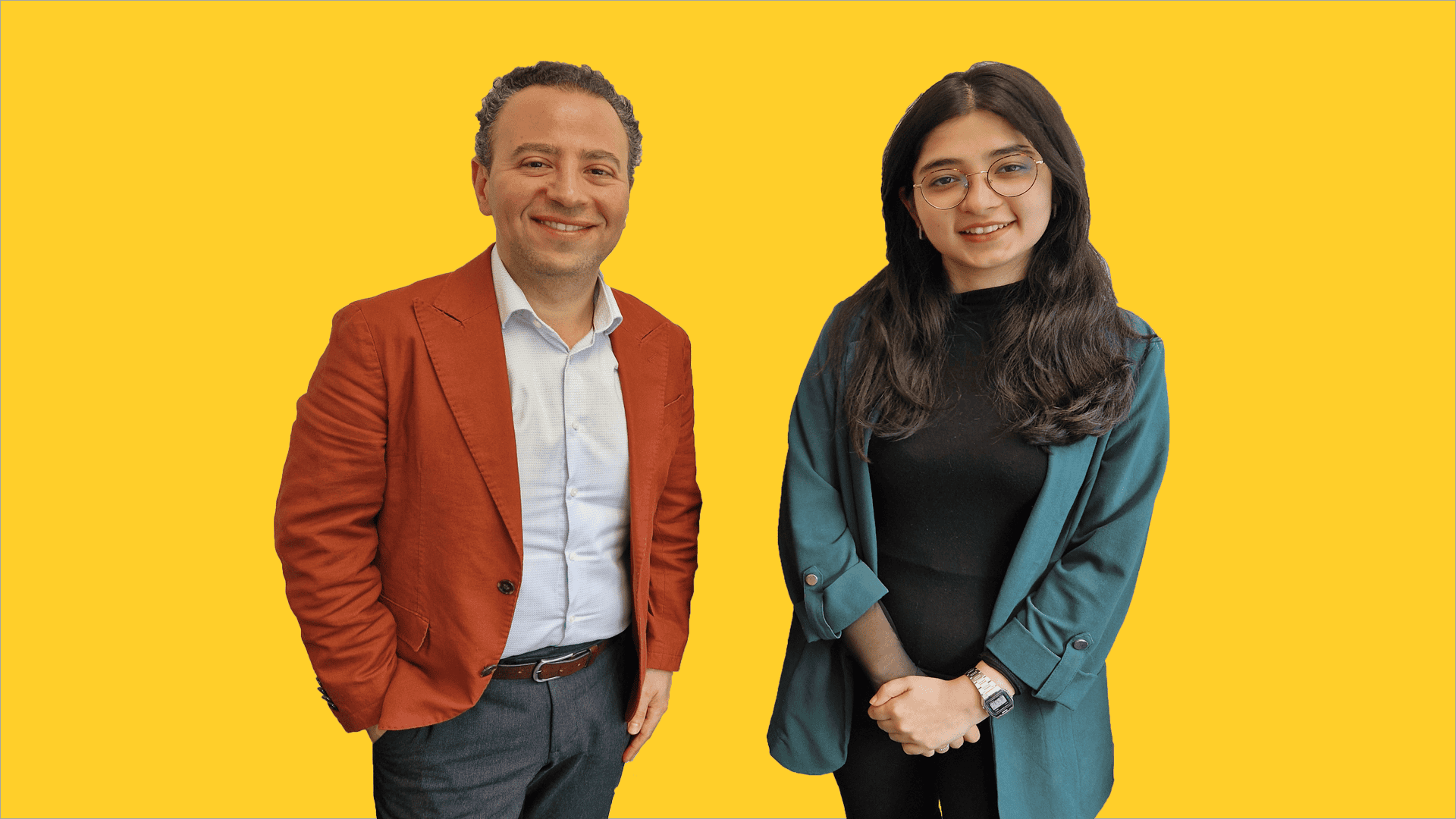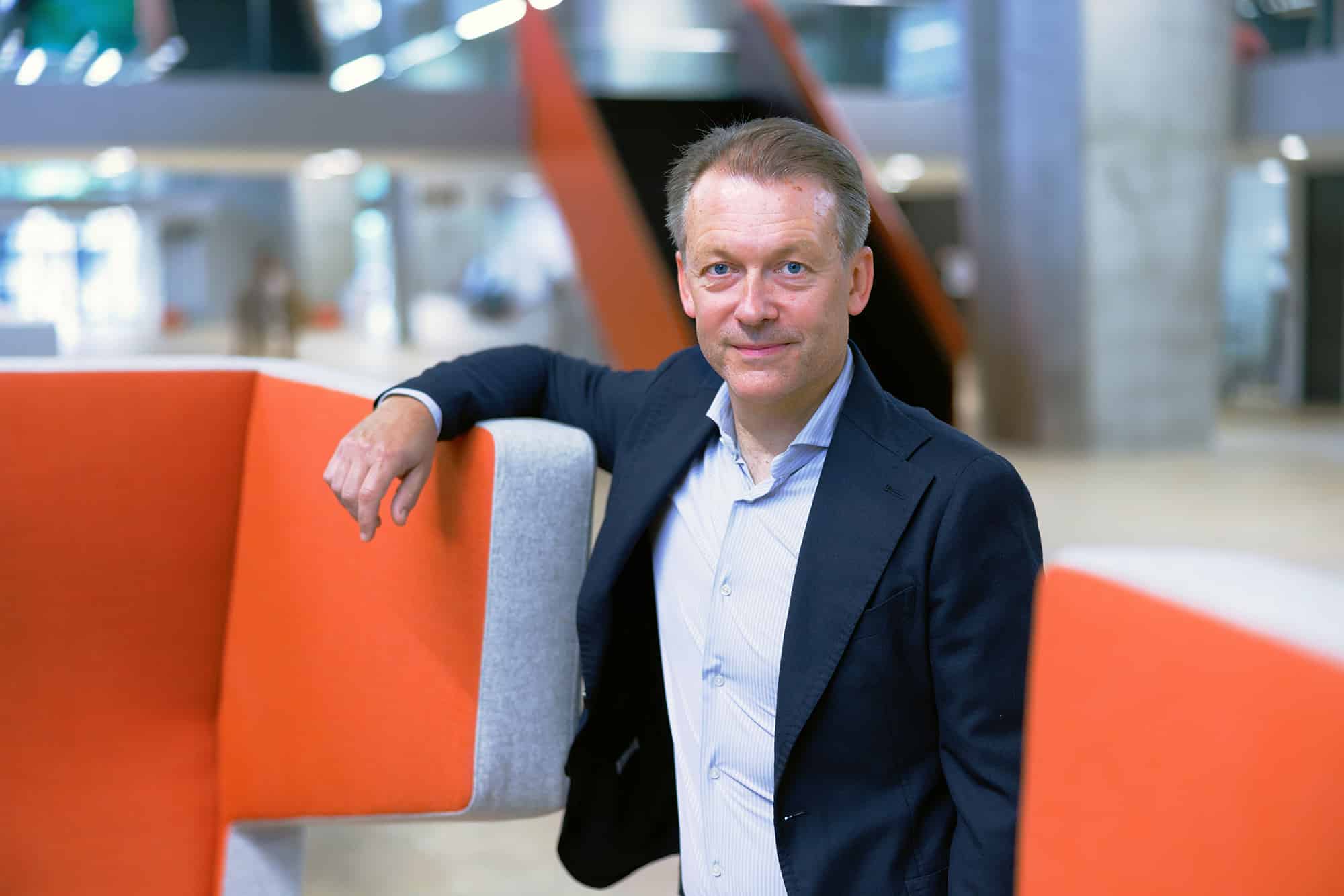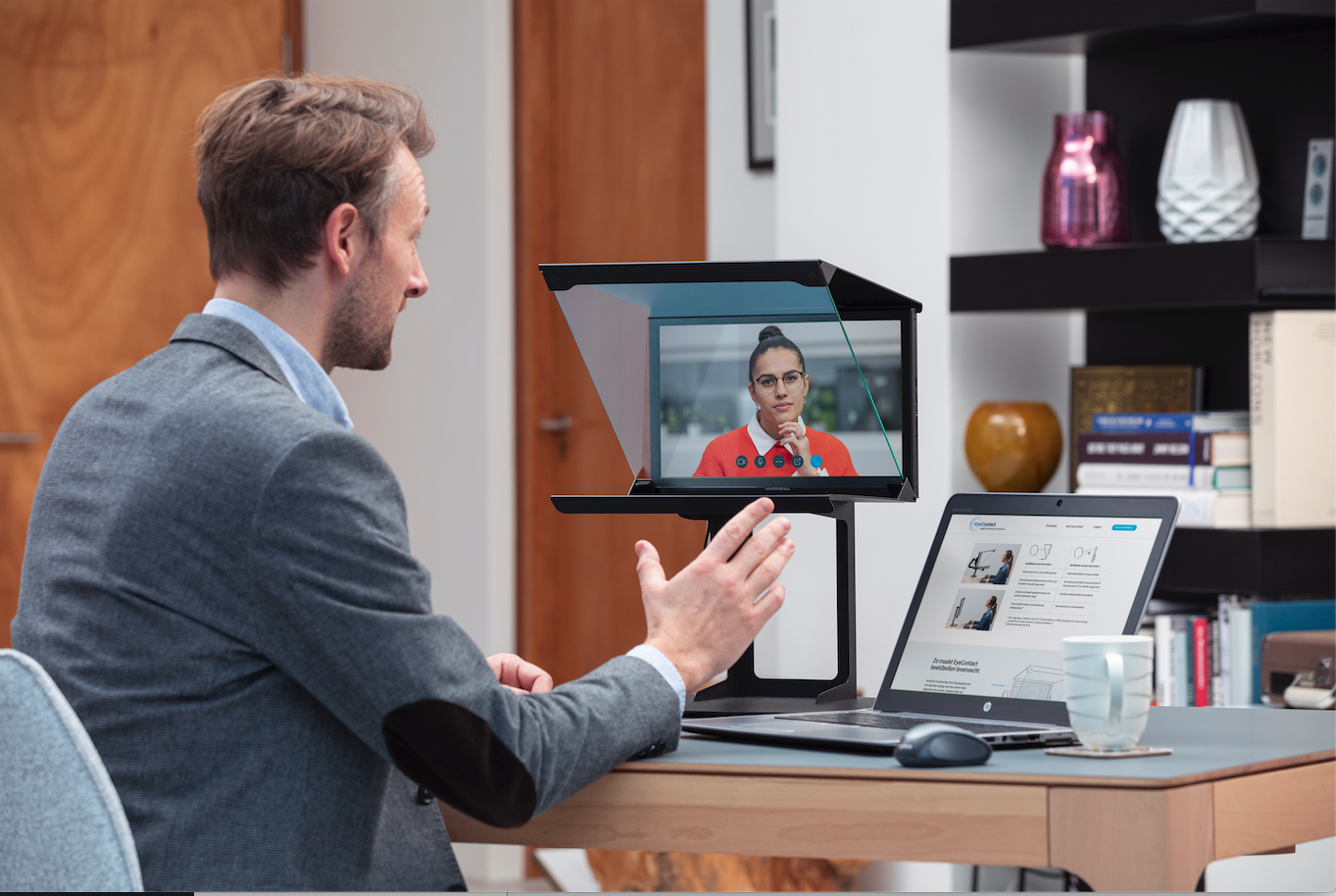
About EyeContact
- Founders: Kamiel Zijderveld and Boudewijn van Sambeek
- Founded in: 2018 in Delft
- Employees: 2
- Money raised: -
- Ultimate goal: Make online video calls as lifelike as possible
Whenever we are in conversation with someone, we usually like it when that person looks at us. This creates an emotional connection and fosters empathy. Researchers at Cornell University in New York have even shown that a feeling of connection is created unconsciously when we see photographs of eyes. So even digitally, we can feel an emotional connection.
We are video calling more than ever, but during video calls, real eye contact is still lacking. While we are looking at the other person, the person on the other end of the line sees someone looking at a random spot. Kamiel Zijderveld is addressing that problem as co-founder of EyeContact. In this instalment of start-up of the day, he spoke to us about the equipment the company has developed that enables virtual eye contact.
What is EyeContact?
“We are developing a technique that lets you see via the camera on your computer. The technique is incorporated in a portable device that we sell through our website. The portable is a separate screen next to your computer which a glass plate is attached to both on the top and the bottom. A special coating has been applied which reflects the camera in the bottom plate at about a ninety degree angle. This lets the camera register your gaze. We are also working on a version for laptops, but that’s still under development. That calls for completely different types of techniques. We have prototypes that work, although we don’t think they are good enough yet.”
What problem are you solving?
“When you are on a video call with someone and you look at the other person, you are actually looking at your screen instead of the camera. To the other person, that looks like you’re looking down and looking at the other person at chest level instead of in their eyes. That’s a bit weird, because you don’t do that in a physical conversation either. With our technique, we make sure that you look into the camera while you also see the other person’s gaze at the same time. We make it possible to combine these two things. If you don’t, then you can’t see what the other person is thinking or feeling and it’s harder to have a personal conversation.”
How do you use the portable?
“It’s very simple: all you have to do is connect our portable to your computer with a USB cable. You can keep using your regular video-calling programs such as Teams and Facetime, and you don’t have to install a new app. It is with that last feature that we try to stand out from the competition. Sometimes other companies still require you to download a new app or use a different computer.”
How did you come up with the idea for this product?
“At my former job, I was a manager in the video call department in disabled care. There, caregivers conduct a lot of video calls with people with mental disabilities. During COVID, we heard from them that they were wondering whether we, as caregivers, were really paying attention. The caregivers were working at home like the rest of the Netherlands and the video calls were even more frequent than usual. For people with disabilities, it is nice if they can communicate with their caregivers in an approachable way, but they did not always have the feeling that they could. If they feel that you don’t have their full attention, then they don’t take you seriously as a caregiver. They tend to hang up quickly or get distracted and start doing other things. If you are having a professional conversation, you want to keep the conversation confidential. And if you’re having a conversation with someone who isn’t looking at your face, you don’t know if the other person is really present in the conversation. I think clients are getting a less guidance than they should be getting whenever eye contact is not possible.”
Who is your product geared towards?
“At the moment, we are mainly focusing on providing business services and on the healthcare sector. We have clients such as the ING Bank, but also healthcare organizations within the GGZ municipal health service and a number of general practitioners use our technology. Since we are still in the start-up phase, we don’t want to focus specifically on one target group yet.”
In which area would you like to develop further?
“We are pleased with what we have right now because we first want to build a larger customer base. Once we have that, we will then look at the next development steps. For one thing, we want to develop our mobile laptop version further, but also integrate a better sound and lighting system into it. Right now, the sound and light are good, but they could be even better. Compare it to an old Nokia: it used to be just fine, now you want a good and fast smartphone.”


